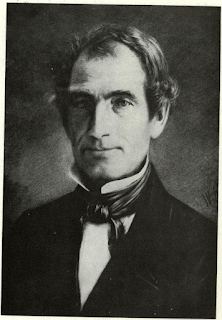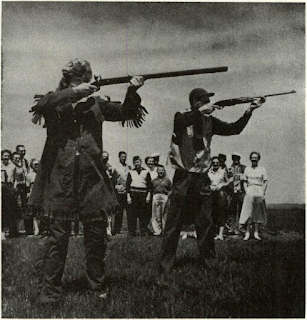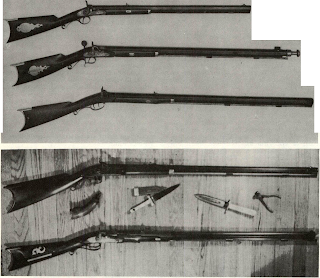The little smithy at Ilion Gulph by had grown
mon in all countries. Instead of the barrel being hit
Existing descriptions of barrel manufacture during
At Remington other work was in progress to have
These rifles are to be .58 inch calibre, and to have a three
The order was acknowledged and agreed to, at
The rifle design established used a stock of Ml855
order filled were rifled with 5 grooves. The lock is
New Remington Army Model .44 Revolver
ORDNANCE OFFICE
Remington accepted the order by J. Remington in
Remington Background
Another rifle often pictured as Remington’s first is shown
lishment in the upper Mohawk Valley, much as the
Among many things not clear are a few certain
Long Rifles, New York was the trade center to which
A most interesting account appears in The Reming
The narrative first recites the story of a young man
What actually happened is subject to conjecture,
sentiment at the close of the War of to
The First Remington Rifle
verted fake. More probably a
Pill-lock Rifles
Pill lock ignition with striker on side of lock is found on some New York State rifles like this handsome Albany rifle of
Billinghurst of Rochester, New York, made a number
In Remington made his first rifle barrel. Alden
The job was done at last. Lite had a tightly wound spiral of
In addition to confusing the fabrication of a
A commercial success it was; idyllic essays on
The date of coincided with a move by the
Tradition continues to note that Remington got
But business continued, and Remington looked upon
We are informed by The Remington Centennial
By Remington had matured considerably in
Sidehammer plain sporting rifles, with full stocks
At Chicopee Falls, in Massachusetts, (Eli Remington)
mechanism. With his inventor’s perception, he saw that he
Jenks was a Yankee, of Welsh descent, with curly hair, round
The upshot of Remington’s visit to Chicopee Falls was that
Hatch concludes this passage by noting that there
But these are not the only catches in the Hatch
ricating the novel Model U. S. Navy pistol or
Such philanthropy seldom paid oft’, but the type
The smallest size is a buggy rifle or possibly a boy’s
Next in size would be described as the Basic Sporter.
The cognomen
stance comes to mind of traditional maker or parts
Among possible suppliers of locks marked
To the stock and lock, Remington fitted a barrel
This same basic sidelock rifle can be found in a
The plainest form of this rifle has only a brass butt
This arm gives evidence of its Remington origins
This handsome rifle has seen better days but still
Among little details of outline and shaping which
Remington Arms was soon to fill a large role in the
The fact is that E. Remington & Sons from the time
The
recalled is about .50-inch, not exceptionally large. It
Any gunmaker worth his salt could slave over spoke
maker’s mark,it may be seen that Remington could
Barrel Straightening
mon in all countries. Instead of the barrel being hit
Existing descriptions of barrel manufacture during
At Remington other work was in progress to have
 |
| Eli Remington, Jr., as a lad built a rifle at Ilion Gulph which was first firearm in series of possibly 30,000,000 made to date. Gun's ignition type has remained puzzle for modern researchers |
Remington Zouave Rifle
One of the most colorful of Civil War arms is theRemington Zouave rifle,caliber .58. The
regulation rifles with sword bayonets,the article pro
These rifles are to be .58 inch calibre, and to have a three
The order was acknowledged and agreed to, at
The rifle design established used a stock of Ml855
order filled were rifled with 5 grooves. The lock is
heretofore made by you for government,as Ripley
BealsNavy re
I am procuring all of them I can for the westernHagner told Ripley,army,
and hope to hear I canget all I may need. I have seen no revolver I like as well, and the price is nearer the cost than some others.
New Remington Army Model .44 Revolver
ORDNANCE OFFICE
Remington accepted the order by J. Remington in
Remington Background
Another rifle often pictured as Remington’s first is shown
competitionwith modern Remington .280
Dan’l Boonecharacter is a fraud, having a Common
lishment in the upper Mohawk Valley, much as the
Among many things not clear are a few certain
Liteexcelled
Long Rifles, New York was the trade center to which
long fowlers.By that date the United
A most interesting account appears in The Reming
The narrative first recites the story of a young man
a youngA footnote in this typescript refers to theman residing in Litchfield whose inclinations pressed him in the same direction as the young man already spoken of.
What actually happened is subject to conjecture,
sentiment at the close of the War of to
buyYouthful Lite Remington’s patriotic ardorAmerican.
The First Remington Rifle
buckhornsight and blade
recon
verted fake. More probably a
firstis another rifle
The First Remington Rifle.This arm has a shad
Pill-lock Rifles
Pill lock ignition with striker on side of lock is found on some New York State rifles like this handsome Albany rifle of
Billinghurst of Rochester, New York, made a number
Remington’s First Barrels
In the Remington story, certain dates are significant.In Remington made his first rifle barrel. Alden
The job was done at last. Lite had a tightly wound spiral of
jumping.It jarred the malleable edges of the spiral
In addition to confusing the fabrication of a
old handsat Remington Arms by describing a
A commercial success it was; idyllic essays on
The spring and other parts wantthe business that emergeding he made himself,
The date of coincided with a move by the
Tradition continues to note that Remington got
But business continued, and Remington looked upon
The First Factory
Factory it was, this stone foundation mill with twoAThe elusivebig tilt hammer, several trip hammers, boring and ri fling machines, grindstones, and so on.
and so onwe hope has damned this
We are informed by The Remington Centennial
The lapwelded barrel was standard untilNo claim can be made that Remington in, and he got together a battery of trip hammers for forging and welding his barrels. Finer dimensions became a factor in his business when the output grew large enough to warrant carrying a stock of spare parts for his customers, and so he improved those parts in ways that gave at least the beginnings of interchange ability.
the barrel maker in Litchfield.While
By Remington had matured considerably in
Jenks Carbine
The Navy’s breech-loading carbine designed bySidehammer plain sporting rifles, with full stocks
At Chicopee Falls, in Massachusetts, (Eli Remington)
mechanism. With his inventor’s perception, he saw that he
Jenks was a Yankee, of Welsh descent, with curly hair, round
The upshot of Remington’s visit to Chicopee Falls was that
Hatch concludes this passage by noting that there
hurry-up order of ancient flintlocks—the lastLike the Unicornever issued to American troops!
But these are not the only catches in the Hatch
galvanizedkind, he coming from South
best breechloader ever,
ricating the novel Model U. S. Navy pistol or
boxlock pistol.Perhaps Remington had gotten the
Such philanthropy seldom paid oft’, but the type
Sporting Rifles
Remington continued production of common AmeriThe smallest size is a buggy rifle or possibly a boy’s
Next in size would be described as the Basic Sporter.
B. FA Coare placed
The cognomen
X Fire Arms Co.was not too
 |
| Long strip on top of Jenks carbine lifts up by hook thumbpiece to uncover trough for loading combustible cartridge. |
flyto guide the sear out
Among possible suppliers of locks marked
B. FAwhich is also listed (by Gluckman and Satterlee)Co.,
B.F.A.,are Joseph and Robert S. Bartless, Bing
B. FA Co.is in fact their maker’s mark,
To the stock and lock, Remington fitted a barrel
This same basic sidelock rifle can be found in a
The plainest form of this rifle has only a brass butt
characteristically rectanguin shape, a rifle fitted withlar with mitred corners,
Rigby flatson a round barrel, turned
This arm gives evidence of its Remington origins
This handsome rifle has seen better days but still
Rigby flats.It
perOn one at least, he put his salescussion target rifles.
Among little details of outline and shaping which
Remingtonto the collector’s eye is a
Americantype, all were in some part identifiedsporting rifle
Remington.The inescapable conclusion is that the
teatshape to the
Remington Arms was soon to fill a large role in the
The fact is that E. Remington & Sons from the time
Remington primer lockwas slightly different
The
Rigby flattedbarrels exist on larger sizes of
recalled is about .50-inch, not exceptionally large. It
If Remington made so many rifles, where are they?
Warren, Albany or the retail salesmen’s stamps like
Any gunmaker worth his salt could slave over spoke
L. Devendorf, Cedarorville,
Utica N. Y„ M. James.





Comments
Post a Comment